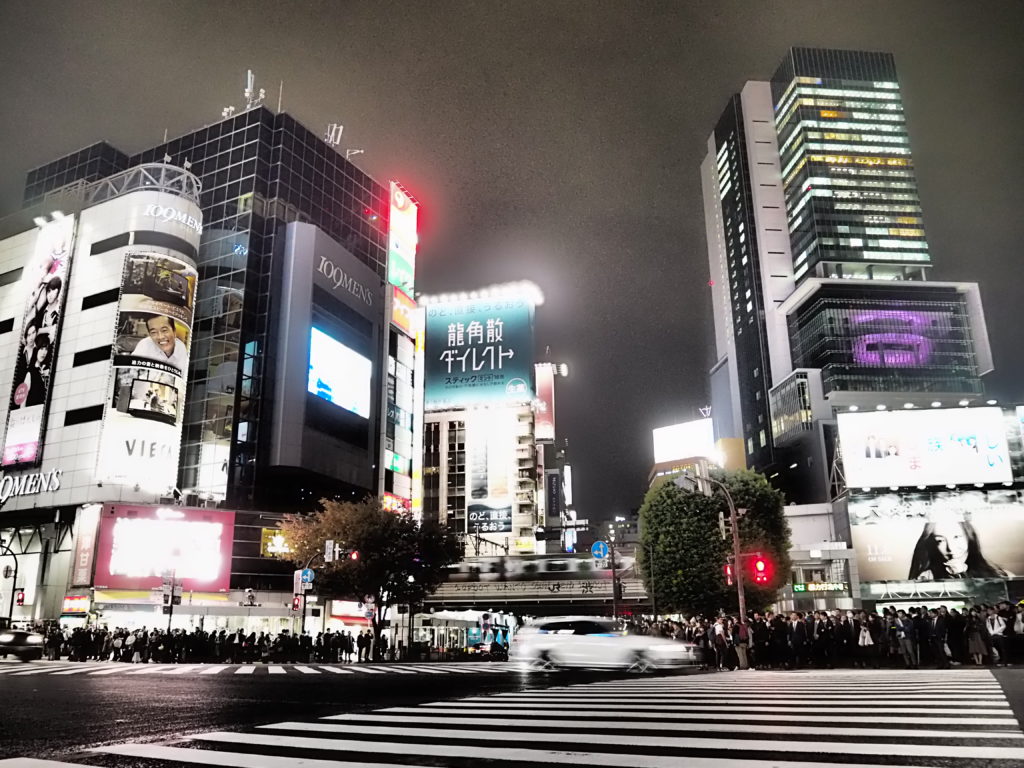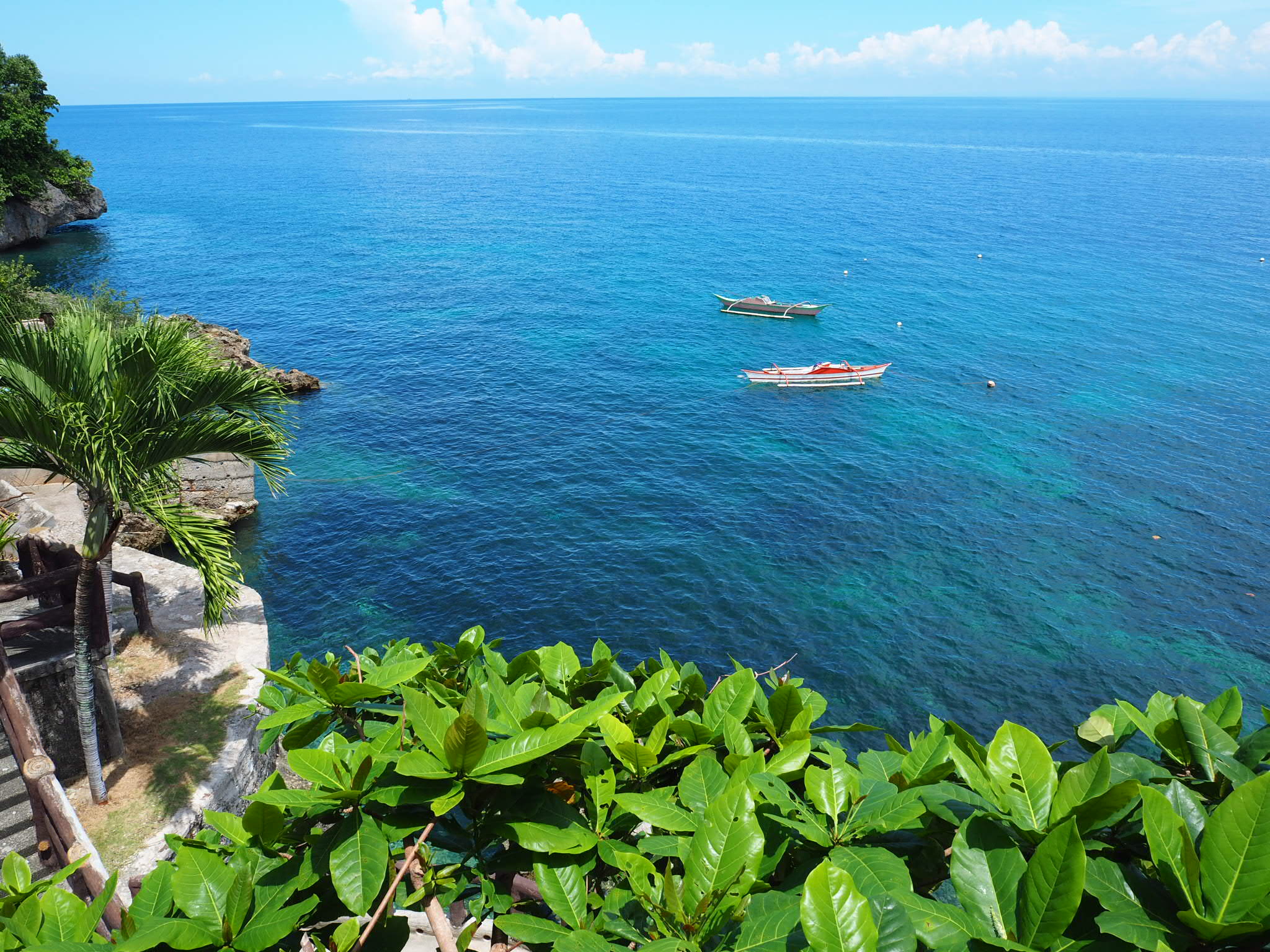Welcome to Tokyo
What can you say about Tokyo? For many Tokyo is the highlight of any visit to Japan; food, history, museums, culture and plenty of quirky things you’ll only find in the land of the rising sun.
There is a lot to see and do in Tokyo, certainly plenty more to see than what’s listed below. However one of the joys of Tokyo is simply walking around and exploring.
We have an article on budgeting in Japan, giving you some really helpful tips on making your money go further and explaining why Japan isn’t as expensive as many people think!
Getting there and away
Tokyo is served by two huge airports; Narita and Haneda. Haneda is closer to the city centre and can be reached via a combination of toei, subway and JR lines. Narita is much, much further away. You have a choice of the skyline or taking a bus. The buses are generally cheaper however they usually drop you in a particular area of the city, as opposed to dropping you at a subway station. Whereas the skyline is more expensive but gets you to Ueno or Nippori and from here you can access the subway directly.
Getting around
Japans greatest urban metropolis has one of the most impressive and confusing transportations systems on planet earth. This is due the fact there are a number of different networks that don’t appear on the same maps as they are run by different companies. This also means that certain tickets will also only work with within the network they are purchased for. However you can buy a tickets that allows you to travel on multiple networks
Effectively there are 3 main train routes you need to know:
- JR Lines – JR passes can be used here.
- Tokyo Metro – 9 lines that zig zag across Tokyo. Extremely convenient, but JR lines cannot be used here.
- Toei – Technically part of the Tokyo metro, but these four lines will require a transfer ticket to be purchased if you plan on using the Tokyo metro and Toei lines on the same journey.
In stations and online 2 maps can be found. One will be the Tokyo metro and Toei together and another will be the JR line map. It is very rare to seem these two train systems on the same map. Do be aware that these maps do not include the private rail lines that travel to other cities in Japan.
There are a large number of tickets and combinations. Outlines of all of them are listed here.
Suica: This is just a simple subway card, like the oyster card in London or the octopus card in Hong Kong. You need to pay a 500 yen deposit for the card, but this is returned to you when you return the card at the end of your trip. Also the fares a few yen cheaper than if you buy tickets at the machine. They can be used on every line in Tokyo.
All Day pass: There are 2 all day pass options. The all day metro card for 600yen which can only be used on the Tokyo metro, or you can include the Toei lines for 900yen. We found the all day metro card fantastic value. If you take 4 trips you will be saving money. Just remember, neither of these passes can be used on the JR lines, so sometimes the journeys are a little longer.
Where to stay
Working out the best place to stay in Tokyo can lead to sleepless nights as there are so many amazing areas to stay and an excellent transport system to get you around. We stayed a short subway ride or even shorter bus ride from the chaotic madness that is Shibuya. Home of the famed Shibuya crossing, an ungodly number of excellent restaurants and with an electric energy that exemplifies everything that is amazing about Tokyo.
Other areas that are usually popular are Shinjuku and Roppongi although the latter can be very expensive and at times a little tacky. On the western side of Tokyo Asakusa and the area around Tokyo station can be little cheaper whilst still having excellent transport links to the rest of the city.
Do not expect huge hotel rooms here. It is not uncommon to find that a twin room contains a bunk bed instead of a double or two twins.
Eating in Tokyo
With more michelin stars than any other city on the planet Tokyo is a foodies haven. Food here ranges from the mind bogglingly expensive, 150GBP per person for sushi in upmarket restaurants in Ginza, to the cheap and cheerful standing ramen restaurants scattered across the city’s bustling alleyways. The cities most well know areas of Shibuya, Harajuku, Shinjuku, Ginza and Ikebukuro are chock full of excellent restaurants, izakayas and noodle houses. Do be aware that prices in Ginza can be significantly more expensive than in other areas of the city. Outside of these major districts there are still plenty of excellent places to eat, but the concentration of eateries is no where near as great.
One thing that is especially common in Tokyo is ticket restaurants. You order your food at a ticket dispensing machine in the corner and then present this ticket to the chefs across the counter. The vast majority of the time there are English translations, or at the very least pictures. We have a separate article about eating in Japan that you can check out.
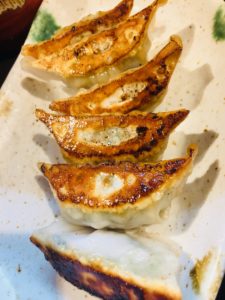
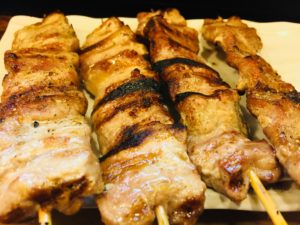
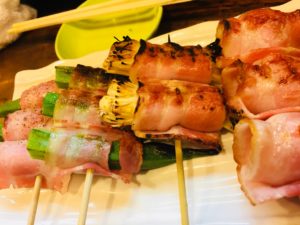
Best things to see and do
This is certainly not an exhaustive list and there is a huge amount to do in Tokyo depending on you interests. Fans of anime will love Akihabara whereas history buffs want to spend more time around Ueno or Asakusa for museums and temples.
However one of the highlights of any trip to Tokyo is simply wandering the streets and seeing what you may discover as there are all manner of hidden gems down Tokyo’s winding alleys.
We’ve broken down some of our favourite things to see by area.
Shibuya
Possibly Tokyos most famous and well known district, although Roppongi may disagree, Shibuya is a wonderfully crazy mix of quiet backstreets and neon overload.
Shibuya Crossing: Probably the Tokyos most famous place. Almost everyone has seen the videos of thousands of pedestrians streaming onto the road at this fabled crossing.
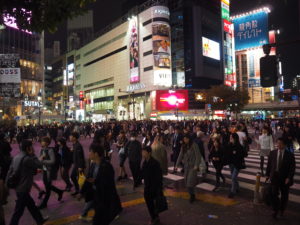
Hachiko Statue: Expect to see people galore crowding around this statue for a selfie with this faithful dog.
Wandering Around: Places to eat are seemingly at every turn and the variety of food available in such a small area is huge. Tiny little ramen shops jostle next to bustling barbecue joints. Head up the hills to the surrounding back streets filled with cafes and live music venues for a change of pace from the commercial hubbub Shibuya is more commonly known for.
Shinjuku
With possibly one of the biggest and busiest subway stations on the planet Shinjuku is home to some Tokyos quirkiest places.
Golden Gai Bars: The area north of the train station is a maze of alleyways and tiny restaurants and bars. Some of which can only hold 5 people. Expect to meet super friendly locals and enjoy some delicious Japanese cuisine. Sadly many bars have to have signs telling people not to take photos. This is due to the sheer number of tourists wandering around with their cameras out photographing everything they can.
Kabukicho: Tokyo’s red light district. Littered with all kinds of sleaze and sin, this is area to find Tokyos infamous love hotels.
Tokyo Government Offices: For a stunning, and free view over the city head over to the Tokyo government offices and follow the signs to the observation deck.
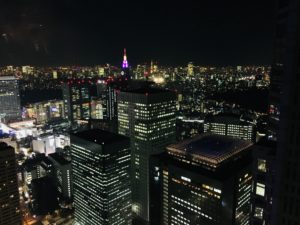
Ginza and Tsukiji
Tsukiji Fish Market: Welcome to one of the worlds most unique and dynamic markets. In previous years you used to be able to go early in the morning. However, tourists are now not allowed to enter until 10am now. The market was at its busiest early in the morning, tourists got in the way and the workers justifiably complained. This is one of the worlds largest markets and it is a place of business first and foremost. They ask that tourists not to take photos, however sadly there are people there that refuse to adhere to this simple request. Some stall owners will tell people to stop and others won’t. Best bet is just to follow the rules or there will be further restrictions on tourists entering this fascinating place.
There are sushi restaurants everywhere. However a great, and more affordable option is the small market close to the Tsukiji fish market. Pre-packaged sushi and sashimi, with a rooftop setting to eat. Perfect.
Shopping in Ginza: Crammed full of designer brands and other such malarky Ginza is an excellent place to splash the cash. Ginza’s backstreets are home to some interesting streets that are worth a look.
Harajuku
Harajuku: A wonderful assault on the senses Harajuku is one of Tokyos most dynamic and unique districts. Expect to find quirky fashions, great food and general other randomness in this always packed, always happening cradle of pop culture. Expect to see some of Japans most “out there” fashions.
The main street of Harajuku is usually packed. The leafy back streets are a great place to escape the crowds for a while. However, it’s the people of Harajuku that make this one of Tokyo’s star attractions.
Meiji Shrine: Across the tracks from Harajuku you will find the huge Meiji Shrine. Tokyo’s biggest Shinto shrine is dedicated Emperor Meiji and Empress Shoken. It was Emperor Meiji who was responsible for the modernisation of Japan making it global power at the end of the 19th century. This status was confirmed with Japans victory over Russia in the Russo-Japanese war in 1905 and the signing of the Anglo-Japanese treaty in 1902. This treaty was the first equal alliance between a western and non-Western nation.
The shrine itself has an very authentic feel which belies its post war construction. The huge Tori gat at the entrance is particularly impressive.
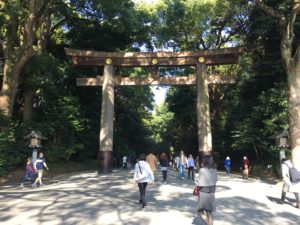
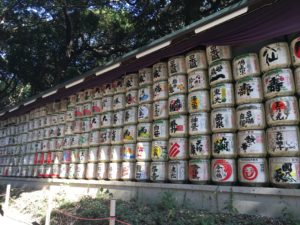
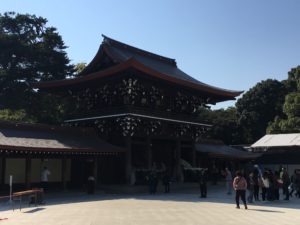
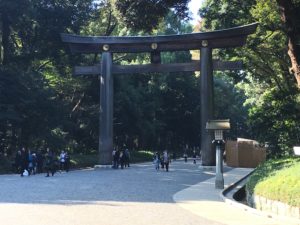
Akiharbara
If your looking for anime, manga, video games and j-pop this is the place to be. This sprawling mass of arcades, electronics markets and shops selling all things manga and anime is a highlight for many that visit Tokyo. Although it lacks any real sights in the traditional sense, like Harajuku this is a place to experience the variety and quirkiness that makes Japanese pop culture so revered and unique.
Huge arcades compete for attention and numerous small shops selling various electronic gadgets, gizmos and computer games. Definitely a place that sums up the image most people have of Japan.
Ueno
National Museum of Japan: If you are interested in history then the national museum of Japan is a must. Exhibitions are informative and detailed with plenty of English.
Ueno Park: This sprawling park that takes you from Ueno station to the National Museum. A great place to relax when the weather is good.
Asakusa
Sensoji Temple: This huge temple complex located around 5-10 minutes from Asakusa subway station is particularly pretty. Although it does get quite busy there a plenty of quiet parts to be found and enjoyed. Also expect to see plenty of tourists kitted out in their kimonos.
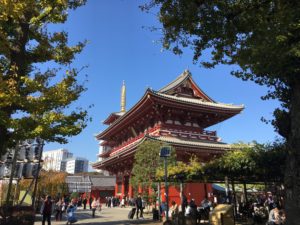
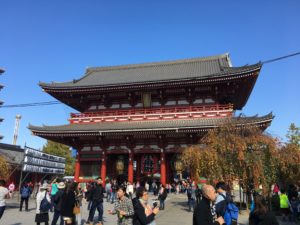
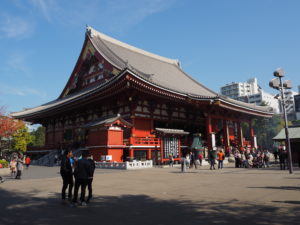
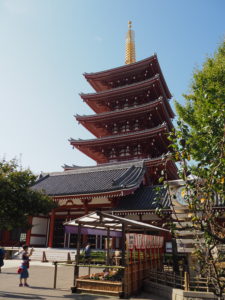
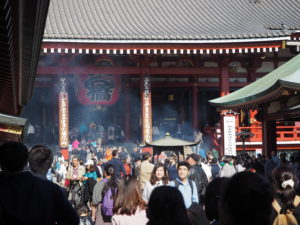
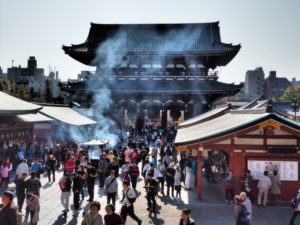
Tokyo Station
Imperial Palace and Gardens: The gardens are the main draw here. Sadly at the time of writing you couldn’t actually get into the imperial palace, but you get a great view of the outer walls.
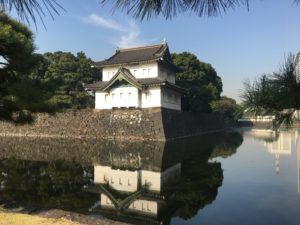
Onsen
Oedo Monogatari hot springs is a huge onsen complex located a few minutes walk from telecom centre station. If you don’t have another opportunity to visit an onsen in Japan this is an excellent place to do it. It’s like an amusement park except instead of rides theres baths. You will be given an electronic swiper which also acts as your locker key. If you want to buy anything to eat or drink just swipe and pay for everything when you leave.
Ikebukuro
Not too far from Shinjuku this bustling neighbourhood is full of restaurants and arcades. It makes a lovely place to spend and evening wandering around.
